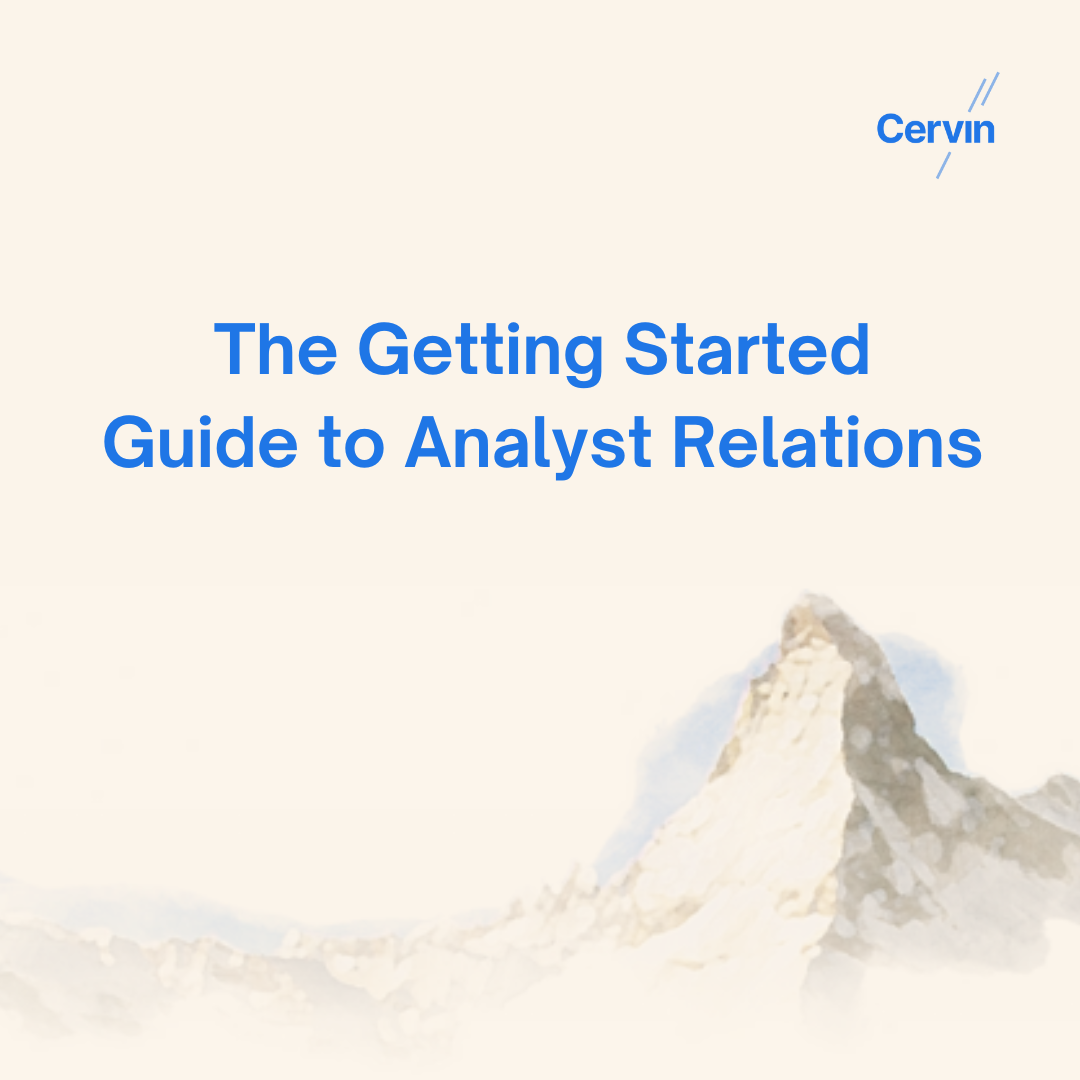For decades, engaging industry analysts has been a core component of the go-to-market motion for enterprise technology companies.
Like the industries they cover, analyst firms are going through a period of change and consolidation which has led some in the startup marketing ecosystem to question the going-forward value of working with industry analysts. That skepticism is understandable given the evolving analyst landscape, and how difficult it can be to identify a hard ROI from your analyst relations efforts.
Based on my years of experience running B2B marketing for both large organizations and startups, here are five key insights every startup marketer (and CEOs!) should know about analyst relations:
1. It’s never too early for AR
There is no downside to beginning to engage analysts by requesting to brief them on your solution and market opportunity. Even early-stage companies can benefit from these conversations, which help you test your messaging, get on the radar of these influencers, and potentially end up on a “new vendor” list such as Gartner’s Cool Vendors.
You don’t have to immediately leap into an expensive annual contract with analysts. Your initial investment in analyst relations (AR) can be nothing more than the time spent:
- Researching the relevant analysts and what they’re writing about
- Requesting briefings with relevant analysts, and
- Crafting and delivering a tight message not only about your solution but also about how you see the market evolving
I can’t stress enough that to secure an analyst briefing, you need something newsworthy to talk about and need to be prepared, just like you would be for a top-tier media outlet like The Wall Street Journal. Analysts have thousands of companies vying for their attention, and you’re going to need a good hook to catch their attention.
Requesting briefings and starting a dialogue with an analyst is a start, but there’s a significant step up in time and resources to running a formal AR function.
2. Analysts provide value beyond published research
I commonly hear start-up executives complain that analyst market map reports are only published every couple of years and are, therefore, always out of date – and therefore – of no value. While being mentioned in a research report or coveted Magic Quadrant is a successful outcome, analysts firms deliver more value to startups in a variety of other ways, including:
- Providing you with feedback on messaging, product roadmap, pricing, and market fit
- Mentioning your solution to enterprise tech buyers in advisory conversations and
- Creating marketing opportunities in the form of participating in your events, custom research, or even dropping your name in one of their frequent press interviews
Analysts specialize in a specific technology sector and tend to see the breadth of solutions in any given market. This gives them a great vantage point for delivering objective feedback on everything from how to frame your product to enterprise buyers to prioritizing your product roadmap and how competitors are positioning themselves. You don’t have to take all of their advice, but a two-way dialogue with a few plugged-in analysts can be a valuable source of aggregated feedback on the market.
In addition to engaging with solutions providers and startups, most analysts at significant firms spend approximately a third of their time on client-facing engagements, talking to enterprise buyers about their space, business issues, and possible solutions. Ideally, you’d be top-of-mind for the analysts, and they might mention your solution in these conversations. Some believe that achieving analyst mindshare depends on how much you spend with that firm. In my experience, being top-of-mind is more likely based on the quality of your interactions with the analyst and the value of the perspectives you’ve shared with them. Having feedback conversations regularly and early on can help you hone your messaging so that it sticks in the minds of analysts and potential customers alike.
3. Finding the right individual analyst for your company is crucial
There is no exact definition of what an industry “analyst” does — no qualifications they need, no set of activities they have to provide. As a result, not all analysts (or analyst firms) undertake the same activities or have equal value to a startup. Each analyst and firm comes with different skills, expertise, influence, brand, and offerings that you need to match to your objectives when engaging them.
To create a valuable AR program, you must consider both the firm and individuals you choose to work with, as well as the role you want them to play in your go-to-market efforts.
For some startups, it will make sense to start with one or two of the “Big Three” analyst firms, Gartner, Forrester, and IDC, because of their breadth of research coverage and ways to engage. In other instances, such as a nascent market or with a very early-stage startup, it can make more strategic sense to work with a smaller boutique firm or individual analyst willing to dedicate the time to understand a technology / sector / solution before it’s mainstream.
4. Don’t count out the smaller players
Though the “Big Three” capture a sizable chunk of the industry analyst market, this doesn’t mean smaller, boutique firms have no value to your AR strategy.
Analysts at smaller firms can be more inclined to make provocative determinations in their research that can serve as excellent fodder for your go-to-market. These analysts are also likely to give you more opinionated insights and feedback on market fit and messaging. Plus, many smaller analyst firms target particular technology areas and have considerable mindshare in those areas.
5. Peer review sites are increasingly important, but still not a replacement for analysts
For years, peer review sites like G2, Capterra and TrustRadius were seen as somewhat helpful channels if you were selling in a PLG or SMB motion because of the SEO value, social proof and intent data they generated.
Companies selling complex, enterprise solutions tended to disregard these channels because of the unvalidated nature of the reviews. That mindset began to change with Gartner’s acquisition of Capterra in 2015 and has continued to evolve with the launch of Gartner Peer Insights that hosts vetted reviews from enterprise technology users.
Gartner seems to be embracing peer feedback, and has aggressively pushed end-users for reviews – even changing their Magic Quadrant process to replace reference calls with an evaluation of the submitted reviews on Peer Insights.
Enterprise tech is more complex today than it was even five years ago. With more technology vendors and hype than ever, it makes sense that buyers and analysts are tapping into the wisdom of the crowd provided by peer reviews. This shift makes it more important than ever for enterprise startups to at least claim their profiles on these peer review sites.






